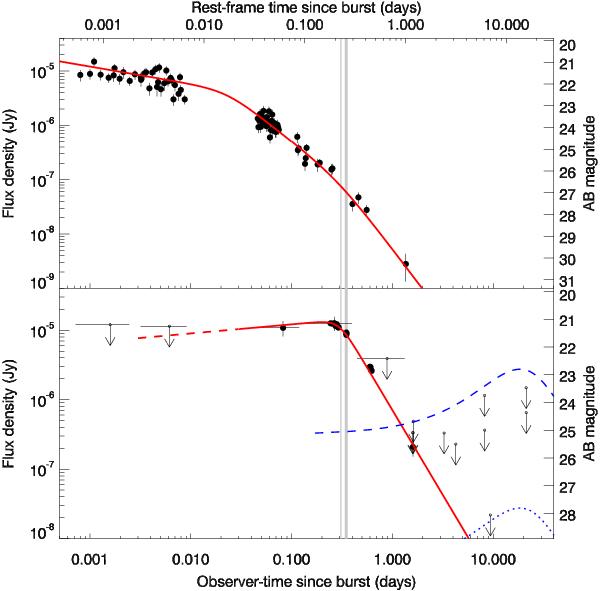Fig. 6

Light curves of GRB 130603B at X-ray (top) and optical (bottom) wavelengths. Detections are indicated with dots and upper limits (3σ) with arrows. The optical photometry of the different bands has been scaled to the r-band. The vertical lines indicate the times when spectra were obtained. We include optical data from the literature (Cucchiara et al. 2013a; Tanvir et al. 2013). The red lines are fits of the light curves with broken power laws, which show that, while the evolution of X-rays and optical are very different until 0.3 days, their evolution is consistent after that time. The dashed blue line is the expected r-band light curve of a supernova like SN 1998bw, the most common template for long GRBs, after including an extinction of AV = 0.86 mag. The most constraining limits indicate that any supernova contribution would be at least 100 times dimmer than SN 1998bw in the r-band, once corrected of extinction (blue dotted line). However, see Tanvir et al. (2013) and Berger et al. (2013a) for the detection of a “kilonova” component at infrared wavelengths.
Current usage metrics show cumulative count of Article Views (full-text article views including HTML views, PDF and ePub downloads, according to the available data) and Abstracts Views on Vision4Press platform.
Data correspond to usage on the plateform after 2015. The current usage metrics is available 48-96 hours after online publication and is updated daily on week days.
Initial download of the metrics may take a while.


